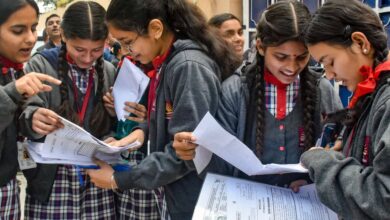Srinagar Tops Jobless Chart as J&K Hits 3.6 Lakh Unemployed

Srinagar Tops Jobless Chart as J&K Hits 3.6 Lakh Unemployed | Image:
Freepik/Representative image
Srinagar: In a disclosure during the ongoing Assembly session, the Jammu and Kashmir government today announced that 361,146 educated unemployed youth are currently registered across the union territory as of September 2025.
According to data presented in the Assembly, Kashmir division accounts for over 2.08 lakh registrations, while the Jammu division has more than 1.52 lakh. Srinagar district leads with 23,826 unemployed youth, followed by Anantnag (32,298), Pulwama (28,671), Kathua (26,798), and Kulgam (21,446). The lowest numbers were recorded in Kishtwar (8,870) and Reasi (12,376).
The gender breakdown reveals 233,845 men and 127,301 women registered as unemployed, highlighting a significant gender gap in access to employment.
The government stated that it is tackling the crisis through Mission Youth–Mission YUVA, a flagship initiative aimed at creating 4.25 lakh job opportunities by establishing 1.37 lakh entrepreneurship units.
These units will focus on startups, self-employment, and skill development, with support from district-level employment and counselling centres that are organising career fairs and job expos to boost youth participation.
However, the challenge remains steep as the youth unemployment rate in J&K stands at 17.4%, far above the national average of 10.2%, according to the Baseline Survey Report 2024–-5 under Mission YUVA.
Meanwhile, the overall unemployment rate in the UT is 6.7%, nearly double the national figure of 3.5%, based on the Periodic Labour Force Survey (PLFS) 2023–24.
District-wise, Rajouri (9.3$% and Anantnag (8.7%) have the highest unemployment rates, while Samba (3%), Jammu (3.3%), and Srinagar (5.9%) show relatively lower figures.
Experts say the crisis is rooted in structural shifts. The J&K economy has transitioned from agriculture to services, with agriculture’s contribution falling from 28.06% in 2004–05 to 16.91% in 2022–23, while the service sector now contributes 63.57% to the UT’s GDP.
Despite this shift, industrial growth has stagnated, limiting job creation and leaving thousands of educated youths without viable employment options.
“This data is alarming,” said Dr. Nayeem Bhat, an economics student of Kashmir University.
“We need targeted investment in industrial zones, tech hubs and service-sector entrepreneurship. Without structural reform, we risk losing an entire generation to economic despair,”.
“We attend job fairs, but there are no real jobs. The private sector is weak, and government posts are rare. We’re stuck between hope and helplessness,” said Shazia Qadri, a sociology graduate from south Kashmir’s Pulwama.
“Every few months, we hear about new schemes and career expos, but they rarely translate into actual employment. I’ve applied to dozens of positions—both public and private, but either the posts are delayed, cancelled, or require experience we don’t yet have. We’re educated, we’re capable, but we feel invisible in the system,” she added.


